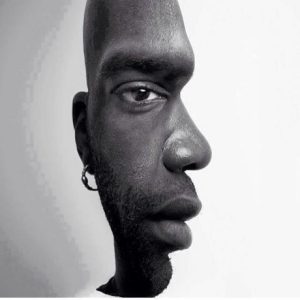Fake News is in the news – but what makes it fake?
On November 28 I met with a mix of IABC UK members and guests to discuss the challenges and issues raised by Fake News.
Facilitated by the superb and provocative Ezri Carlebach people heard from five speakers for five minutes each.
Spin and misinformation
Jane Mitchell, is a specialist on business ethics, and she talked about the age-old problem of spin and its counterproductive impact on people within and outside organisations. But deeper than this she looked at the cultures that generate misinformation and the cost of unethical practices citing Volkswagen’s cumulative costs from “Diesel gate” at approximately $30billion
In a biased world, how can you know truth?
I talked about the difficulty of knowing what is true and what is not when our brains can make snap judgements and easily deceive us. Using visual illusions to illustrate how the brain works, and as a metaphor for cognitive bias, highlighted how the same information can lead to widely differing reports depending upon what people want to hear. I finished by talking about strategies to mitigate bias including checking sources and gaining alternative perspectives.
Internal communication goes external
Jenni Field, Chair of CIPR Inside, pointed out that Fake news is nothing new but that verification is essential now that internal communication can rapidly spread to external audiences. Jenni talked about the ethical responsibility professional communicators have, their role as enablers of effective conversations and their potential to act as the voice of authenticity to strengthen the employer brand.
The speed of digital communication
Kevin Read used to be Executive Chairman & Partner of Engage by Bell Pottinger. He majored on the impact of digital communication, the difficulty of separating truth from fiction and how digital soundbites lack filters and context.
Nothing new in fakery
Barbara Gibson from Birkbeck University had the room hooting with laughter as she told stories about her early childhood and exposure to high religion, full of dubious claims. In today’s world, she highlighted the preponderance of “fakery” and the amplification of false news via social media, ending with a truth twister’s tongue twister that had the whole room mucking about with fakery – you get the drift!
The night was as much about networking, connecting, fun and refreshments as it was about the subject of Fake News. But some thoughts on what we discussed include
Fake News is not new
It has been with us since we were first able to communicate with each other and since we came down from the trees. It is a reflection of how we communicate with each other and how our brains work. Donald Trump may have re-energised use of the term but he did not invent the term nor the concept.
The perils of social media
Social media has lots of benefits but one of the downsides is the ability to spread misinformation at lightning speed and vast scale, especially when in the hands of people who should know better or who are unaware of the implications of the false data they are sharing.
Seeing truth
We are unable to identify “truth” because we are all subject to cognitive bias, often unconscious. Working with others, diverse inputs, second opinions, checking audience expectations and understanding are more important than ever.
Shortly before the evening, Oxford Circus in London witnessed panic caused by false information about supposed gunfire in London Underground, spread rapidly by twitter. Shortly afterwards Donald Trump retweeted anti-Islamic propaganda.
The information people spread, whatever their motivation, may be false. There is nothing fake about the threats and dangers posed by this behaviour.






